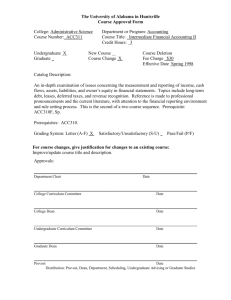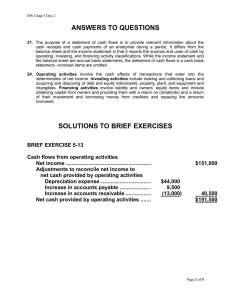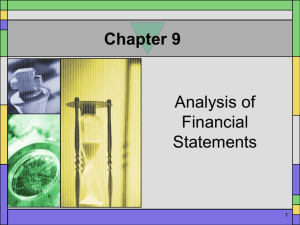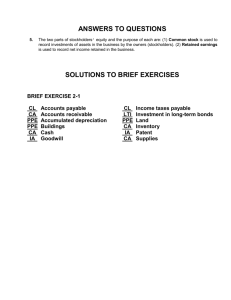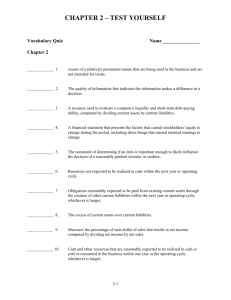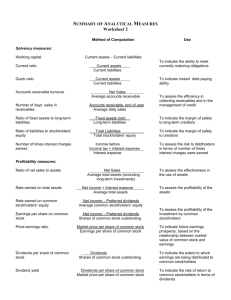Intermediate Accounting B
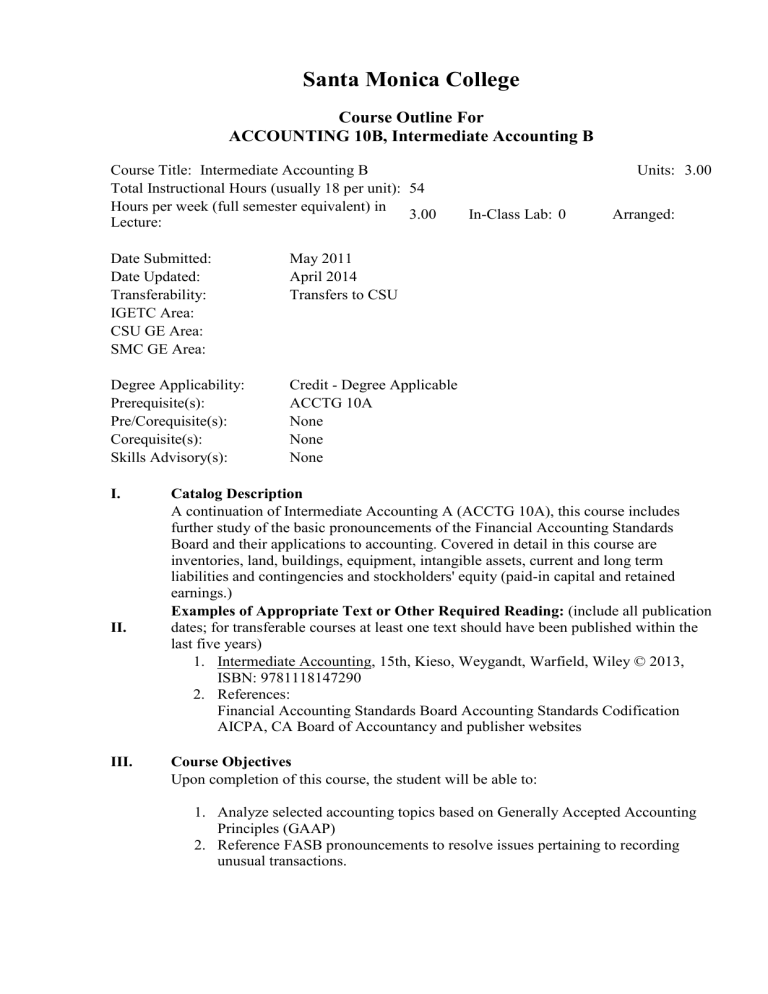
Santa Monica College
Course Outline For
ACCOUNTING 10B, Intermediate Accounting B
Course Title: Intermediate Accounting B
Total Instructional Hours (usually 18 per unit): 54
Hours per week (full semester equivalent) in
Lecture:
3.00 In-Class Lab: 0
Date Submitted:
Date Updated:
Transferability:
IGETC Area:
CSU GE Area:
SMC GE Area:
May 2011
April 2014
Transfers to CSU
Units: 3.00
Arranged:
Degree Applicability:
Prerequisite(s):
Pre/Corequisite(s):
Corequisite(s):
Credit - Degree Applicable
ACCTG 10A
None
None
None Skills Advisory(s):
I. Catalog Description
A continuation of Intermediate Accounting A (ACCTG 10A), this course includes further study of the basic pronouncements of the Financial Accounting Standards
Board and their applications to accounting. Covered in detail in this course are inventories, land, buildings, equipment, intangible assets, current and long term liabilities and contingencies and stockholders' equity (paid-in capital and retained earnings.)
II.
Examples of Appropriate Text or Other Required Reading: (include all publication dates; for transferable courses at least one text should have been published within the last five years)
1.
Intermediate Accounting, 15th, Kieso, Weygandt, Warfield, Wiley © 2013,
ISBN: 9781118147290
2.
References:
Financial Accounting Standards Board Accounting Standards Codification
AICPA, CA Board of Accountancy and publisher websites
III. Course Objectives
Upon completion of this course, the student will be able to:
1.
Analyze selected accounting topics based on Generally Accepted Accounting
Principles (GAAP)
2.
Reference FASB pronouncements to resolve issues pertaining to recording unusual transactions.
IV.
V.
VI.
3.
Record, prepare and analyze with respect to valuation issues transactions affecting inventories, capital and other assets, short and long-term liabilities, and stockholders? equity.
Methods of Presentation:
Other (Specify)
Other Methods: PowerPoint demonstrations will be utilized as on-line lectures.
Examples of problems, calculations and solutions will be provided, with feedback.
Threaded discussions may be used to assess, clarify and enhance student understanding. Assignments and quizzes will be explained via presentation and clarified via discussion boards, e-mail, or phone discussions as needed.
Course Content
% of course Topic
13% Advanced inventory valuation issues
13% Acquisition and disposition of property, plant and equipment
13% Depreciation, impairments, and depletion
13% Intangible assets and amortization
13% Current liabilities and contingencies
13% Long term liabilities
13%
Stockholders’ equity
13% Dilutive Securities and Earnings Per Share
100% Total
Methods of Evaluation: (Actual point distribution will vary from instructor to instructor but approximate values are shown.)
Percentage Evaluation Method
29 % Exams/Tests
19 % Quizzes
23 % Homework - and other Assigned Activities
29 % Final exam
100 % Total
Additional Assessment Information:
(Actual percentages will vary from instructor to instructor but approximate values are shown.)
VII. Sample Assignments:
Sample Assignment 1
Fosbre Corporation’s April 30 inventory was destroyed by fire. January 1 inventory was $225,900, and purchases for January through April totaled $490,500. Sales revenue for the same period were $725,000. Fosbre’s normal gross profit percentage is 30% on sales.
Using the gross profit method, estimate Fosbre’s April 30 inventory that was destroyed by fire.
Sample Assignment 2
The following transactions occurred during 2014. Assume that depreciation of 10% per year is charged on all machinery and 5% per year on buildings, on a straight-line basis, with no estimated salvage value. Depreciation is charged for a full year on all fixed assets acquired during the year, and no depreciation is charged on fixed assets disposed of during the year.
Jan. 30 A building that cost $183,480 in 1997 is torn down to make room for a new building. The wrecking contractor was paid $7,089 and was permitted to keep all materials salvaged.
Mar. 10 Machinery that was purchased in 2007 for $22,240 is sold for $4,031 cash, f.o.b. purchaser’s plant. Freight of $417 is paid on the sale of this machinery.
Mar. 20 A gear breaks on a machine that cost $12,510 in 2009. The gear is replaced at a cost of $2,780. The replacement does not extend the useful life of the machine but does not make the machine more efficient.
May 18 A special base installed for a machine in 2008 when the machine was purchased has to be replaced at a cost of $7,645 because of defective workmanship on the original base. The cost of the machinery was
$19,738 in 2008. The cost of the base was $4,865, and this amount was charged to the Machinery account in 2008.
June 23 One of the buildings is repainted at a cost of $9,591. It had not been painted since it was constructed in 2010.
Prepare general journal entries for the transactions.
VIII. Student Learning Outcomes
1.
Record transactions and analyze financial statements in detail based on
Accounting Standards Codification and the Conceptual Framework promulgated by the Financial Accounting Standards Board. Emphasis in this second course of a three-course sequence will be on the following topics: long-term assets, current liabilities, long-term liabilities, stockholders' equity, dilutive securities, and earnings per share.
2.
Demonstrate a level of engagement in the subject matter that reveals their understanding of the value of the course content beyond the task itself,
specifically as it relates to linking the relevance of course content to careers in business and accounting and their personal lives.


